Ha Nam is a province in Red River Delta Vietnam, borders with Hanoi in the north, Hung Yen and Thai Binh in the east Ninh Binh in the south, Nam Dinh in the southeast and Hoa Binh in the west. As planned, this province belongs to Hanoi Capital Region.
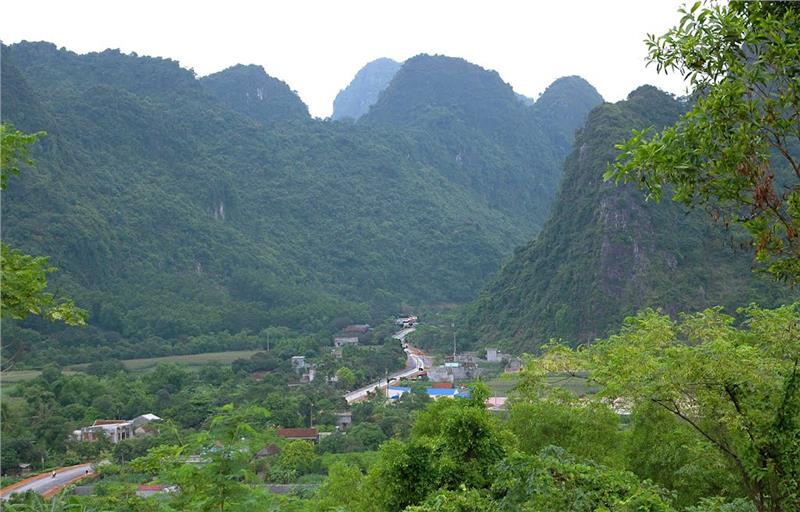
Ha Nam is a plain province bordering mountain, so Ha Nam terrain has the opposition between plain and mountain. The density and depth of dissected topography compared to mountainous region in the country is almost negligible. The only topographical direction is northwest - southeast, matching the most common direction of mountains and rivers in Vietnam. Sloping of the terrain is also the Northwest - Southeast along the valley of Red River, Day River and limestone mountain Hoa Binh - Ninh Binh, reflecting the simple nature of geological structure.
The west of the province (accounting for 10 - 15% of Ha Nam area) is a half-mountain half-plain area with limestone mountain ranges, forests; many places have the steep terrain. Limestone mountain here is a part of limestone mountain Hoa Binh - Ninh Binh, with the large dissected density forming many exotic caves. Go to the east is low hills, interspersed with rock mountains, valleys and fields. With caves and cultural-historical relics, this province has big potential to develop tourism and tourist areas.
The east is alluvial plains raised by large rivers (accounting for 85 - 90% of the Ha Nam area), fertile soil suitable for wet rice cultivation, vegetables, industrial crops such as sugarcane, strawberries, soybeans, peanuts and some fruit trees. Most of the land in this area is fragmented by the dense system of rivers. So, the water surface area of lakes, ponds, lagoons, fields, rivers is favorable for the framing, fisheries and poultry under water.
Ha Nam climate features the tropical monsoon climate. The annual average temperature is about 23 - 24°C, the average sunshine hours are about 1300-1500 hours/year. In the year, 8 to 9 months have the average temperatures above 20° C (including 5 months with average temperatures above 25° C), and only 3 months have average temperature below 20° C, but there is no month with a temperature below 16° C. The average rainfall is about 1900mm. The average humidity is about 85%. March is the month with the highest average humidity (95.5%), and November is the month with the lowest average humidity in year (82.5%).
Flowing through the territory of Ha Nam is the big rivers as Red River, Day River, Chau River and the river dig by human as Nhue River, Sat River, Nong Giang, etc. Climatic conditions and hydrology in this province is very favorable for the development of agriculture, biodiversity, with many types of tropical and temperate plants. Weather conditions are favorable for the development of industry, trade, tourism and service as well as cultural, social activities and daily life of people.
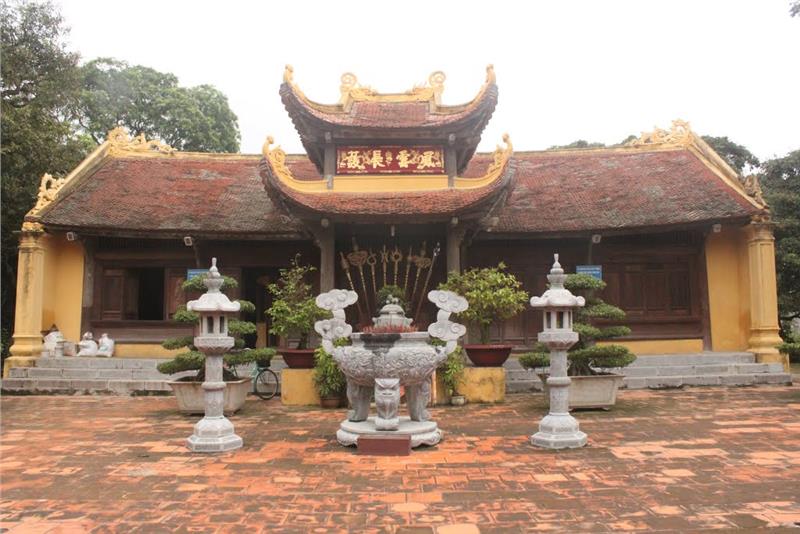
225 million years ago, the whole area of Ha Nam, Nam Dinh, Thai Binh and Ninh Binh locate deep under the sea. Last Jurassic period or early cretaceous period, a tectonic movement created the limestone mountain of 3 provinces of Ha Nam, Nam Dinh and Ninh Binh today. The majority of rocky distributed along the right bank of the river bottom, a few of mountains located in the left.The majority of rocky mountain is distributed along the right bank of Day river, a few of mountains lie in the left bank.
Ha Nam is the land deposited silt by Red River and Day River and collecting then land eroded from the high mountains. In addition to mountains, Ha Nam is surrounded by rivers. They are Red River in the east, Day River in the west, Nhue River in the north, Ninh River in the south and other rivers flowing in the provinces. Natural conditions has created the historical cultural characteristics of an interference area or cultural connection from east to west, north to south and these features have formed personality of Ha Nam people throughout the long history of building and defending the country.
According to archaeological results, primitive people appeared in Ha Nam about 1 thousand years ago, in the early Neolithic period of Hoa Binh culture and Bac Son culture. During the period of Hung Kings, Ha Nam was located in Vu Binh district, Giao Chi; until Tran Dynasty; Ha Nam changed into Ly Nhan district, Dong Do.
Under Le Dynasty, 1624 Minister Nguyen Khai moved the capital of Son Nam tran from Tuong Lan commune, Duy Tien district, Ly Nhan to Chau Cau, Kim Bang district, Ly Nhan, Son Nam Thuong tran. In 1832, (under Nguyen Dynasty), King Minh Mang decided to establish provincial administrative units; Ly Nhan was changed into Ly Nhan district, belonging to Hanoi.
In October 1890 (the second year of King Thanh Thai), Ly Nhan district was renamed Ha Nam Province. On October 20th, 1908, Governor-General of French Indochina issued a decree to merge the entire Liem Binh district and 17 communes of Vu Ban district and Thuong Nguyen (the south of My Loc) of Nam Dinh province and Moc Hoan, Chuyen Nghiep of Phu Xuyen district (Hanoi) into Duy Tien district and establish Ha Nam Province. In April 1965, Ha Nam was merged with Nam Dinh into Nam Ha. In December 1975. Nam Ha merged with Ninh Binh into Ha Nam Ninh province. In 1992, Nam Ha province and Ninh Binh province were separated. In November 1996, Ha Nam was re-established.
Total households of Ha Nam Province were estimated at 254,399 households in 2014. The total number of permanent staff estimated that 798,572 to 2014 people. The population in 2014 is 798,572 people. The economic level, and socio-cultural level of Ha Nam people develop relatively high, income and livelihood of the majority of the population has improved significantly. Unique features of the citizens and human resources in of Ha Nam is traditionally hard work, overcoming difficulties to develop production, the traditional fondness for learning, creativity in the economic development, social and cultural expansion. This is a special important resource for socio-economic development of the province.
Provincial People's Committee is a state administrative agency at the local, which is the executive body of the People's Councils, responsible for implementation of the Constitution, the Law, the text of State agencies, province and provincial Committee, provincial Standing Committee, to ensure the implementation of policies and measures for socio-economic development, strengthening national defense and security and other policies province. Ha Nam currently has 1 city and 5 districts, including 116 communal administrative units: 7 towns, 11 wards and 98 communes.
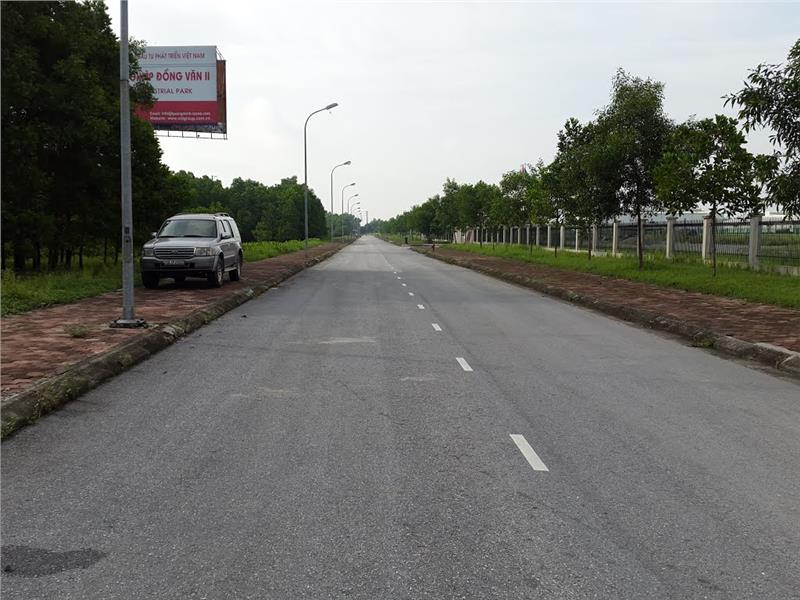
During the implementation of the industrial zones’ objectives development under Resolution of Provincial Party Congress, under the leadership and guidance of the provincial Party Committee, People's Committee, the coordination of the related departments, Ha Nam Province has achieved encouraging results, contributing to the economic restructuring of the province, creating jobs for workers, a positive contribution to the local budget. Until now, Ha Nam has 8 industrial zones approved by the Prime Minister, with 1,773 ha area. There are 4 industrial zones put into operation: Dong Van Industrial Zone I, Dong Van Industrial Zone II, Hoa Mac Industrial Zone, Chau Son industrial zone. The infrastructure of industrial zones has been synchronized, attracting 163 projects (74 FDI projects and 89 domestic projects) with the registered capital of 681 million USD and 8709 billion dong.
In recent years, the industrial output value of enterprises in industrial zones has increased, accounting for large proportion of the total production value in the province. The export value of enterprises in industrial parks increases continuously. Until now, enterprises in industrial zones have created jobs for nearly 14,000 employees, increasing the total number of employees working in this zone to 30,000 employees. In the future, the province will create the most favorable conditions on mechanisms and policies to attract investors. Ha Nam has over 40 craft villages There are long-standing traditional villages like Nha Xa weaving vilage, Doi Tam Drum, Ngoc Dong Rattan Knitting (Duy Tien), Quyet Thanh Pottery, Kim Bang Carpentry, Thanh Ha Embroidery (Thanh Liem), so on.
Health facilities, education, culture and social welfare of Ha Nam are more and more developing. Over years, staff of health sector is trained, and improved in the professional level. In the province, there is no major epidemic disease, the percentage of malnourished children under 5 decrease to 15.4%. In 2014, the province has started construction of the second base of Vietnam-Germany Friendship Hospital and Bach Mai Hospital. The second bases of 2 hospitals are built in the area of nearly 21ha/ hospital with 1000 beds each hospital. The project is expected to inaugurate the first phase in February 2016, and the entire constructions in December 2017. From 2010 until now, the quality of education in general and high school education in particular of the province has significant steps, lying among the provinces with high-quality education in the country.
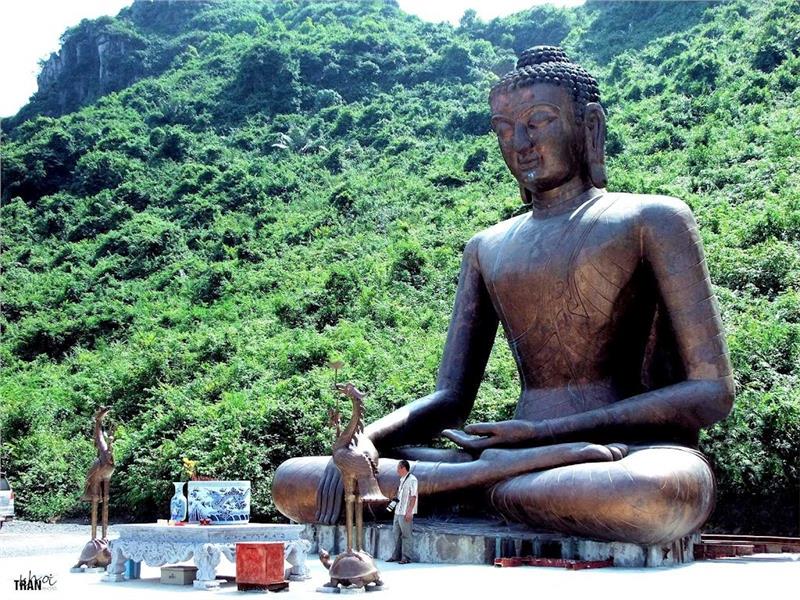
Ha Nam Province has the long wet rice civilization and diverse folk culture, expressing through cheo singing, chau van singing, hau dong, especially dam singing. Lying in the southwest of the north delta, being an agricultural province, Nam Dinh people still preserve many ancient religious forms worshiping in their spiritual life. The most outstanding religion is the worship of Tu Phap (4 Natural Gods). The worship of Tu Phap is worshiping 4 Gods of Nature who have important impact on agricultural production in the complete dependence on nature. That is 4 gods: Rain God (Phap Vu), Cloud God (Phap Van), Thunder God (Phap Loi), Lightning God (Phap Dien).
In terms of the profound essence, Tu Phap faith rooted notion of animism. This is one of the ancient beliefs in the living human when they have to faces numerous challenges of nature. Gods decided the operation of the universe, including human life, particularly, the agricultural area. That is a profound philosophy of worship for the four French in the spiritual life of the Vietnamese people. Concept of Rain God and Wind God sink into the mind of Vietnamese people from ancient times, before Buddhism arrived in this land. Until Buddhism came to Vietnam, the monks realized that if Buddhism wanted to exist in this land, it must be reconciled with folk beliefs. Results of the inter-cultural communication were the introduction of Tu Phap system, four Buddhas imbued with the folk nature of the Vietnamese people, known as the folk Buddhism.
Derived from the animism, worshiping Water God is a popular religion appeared early in the areas with many rivers. According to the legend of the gods worshiped in temples, pagodas and festivals of Ha Nam, people see that the worship of Water God is quite clearly.
The worship of Tutelary God is derived from ancient China, after introduced into Vietnam, it has quickly sink into the consciousness of Vietnamese farmers, and become very diverse. The Tutelary God may be an angel like Phu Dong Thien Vuong, a Mountain God as Tan Vien Son Than, a national hero like Ly Thuong Kiet, Tran Hung Dao, Yet Kieu, Da Tuong, or sometimes is evil spirit with lots of strange and ridiculous legends. But the Tutelary Gods conferred a title by kings (except evil spirit) always represents his village, is the expression of history, morality, tradition, law and hope for the whole village. Tutelary God has invisible power making the village into a coherent system.
In the mind of Vietnamese people, Tutelary God is the supernatural god who can witness the entire life of the villagers, protect and bless villagers. Generations continue the proliferation but the tutelary exists forever, becoming an undeniable testimony of a village through the ups and downs. This worship is an invisible wire to link people together and preserve habits and cultural values of village.

Truc Temple - Ngu Dong Son is located in Quyen Son village, Thi Son commune, Kim Bang district, about 7km far from Phu Ly district along the National Route 21A. Legend has it that after defeating invader, the Ly Thuong Kiet and triumphant troops stopped here to sacrifice and celebrate the victory. Later, to commemorate him, local people established temple under the foot of Cam Mountain and called Truc Temple. In the mountain, there is Ngu Dong Son - 5 interconnecting stone caves into a continuous range with the depth over 100m. Long Doi Pagoda was built under the reign of King Le Thanh Tong. It is located in Doi Mountain with the altitude of 79m above the sea level, in Doi Son commune, Duy Tien district, about 50km far from Hanoi to the south. Panoramic view of Doi Mountain looks like a huge dragon lying in the low plain. Despite being built since mid-eleventh century, it was actually developed and built in the great size in 1118 under the reign of King Ly Nhan Tong.
Tam Chuc - Ba Sao tourist area is situated about 15km away from Phu Ly City to the west, on National Route 21, adjacent to major tourist areas of the country as Perfume Pagoda (Hanoi), Bai Dinh, Cuc Phuong (Ninh Binh) and Tien Pagoda (Hoa Binh). The area consists of the landscapes associated with Tam Chuc Lake and Ba Sao Pagoda in Ba Sao town and Kha Phong commune, Kim Bang District, Ha Nam. This is the wetland limestone mountain with many cultural historical relics as Vong Cave, Co Doi Cave, Thien Phuc Pagoda, Ba Danh Pagoda, Ly Thuong Kiet Temple, Thi Pagoda, Thuy Cave, Lim Cave, De Yem Cave, Chua Cave, Le Chan Temple, Ong Pagoda, Tam Giao Pagoda, Kieu Pagoda and Van Mong Pagoda.
Festival
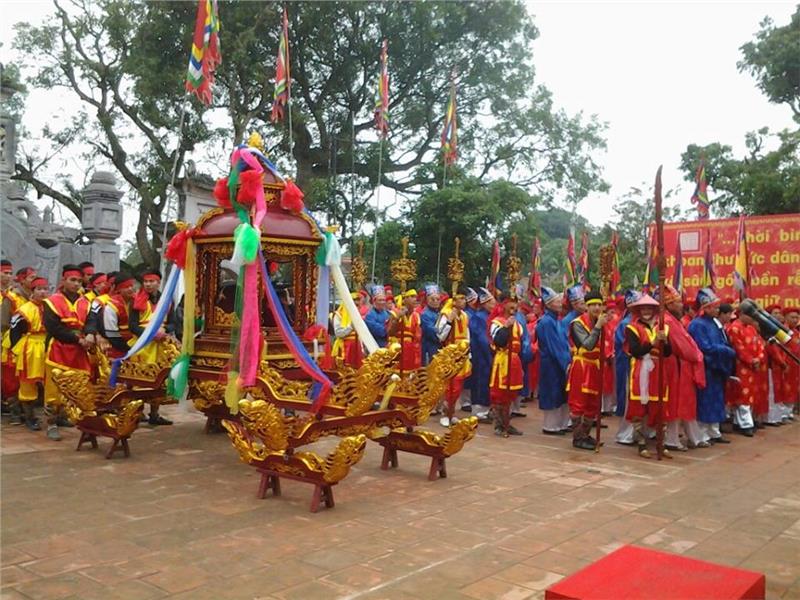
In thousands of traditional festivals throughout the country, a festival with deeply agricultural meaning enhancing the role of agricultural production of kings is Tich Dien festival taken the initiative by King Le Dai Hanh. Tran Thuong Temple in Tran Thuong commune, Nhan Dao commune, Ly Nhan district, Ha Nam is also the place worshiping Hung Dao Dai Vuong. Tran Thuong festival is held to commemorate this national hero. Folk have a saying: August is the death anniversary of Father; March is that of Mother. It talks about 2 saints: Saint Tran (Tran Hung Dao) and Holy Mother (Lieu Hanh).
Tran Thuong Temple Festival in Nhan Dao commune, Ly Nhan district is annually held on 20th day of eight lunar month and night 14 January lunar calendar. Tran Thuong temple worshiping Quoc Cong Tiet Che Hung Dao Dai Vuong Tran Quoc Tuan (Tran Hung Dao) is the place where he set up stores of food to serve for the resistance against the Yuan-Mongol invaders in the 13th century. Tran Thuong Temple Festival is one of the large festivals in Ha Nam, commemorating the great merit of the national hero, contributing to promoting the national cultural identity, education for descendants of patriotic tradition, against invaders of their ancestors. Tran Thuong temple festival is one of three regional festivals of Ha Nam. This festival is a pilgrimage to the root not only for locals but also for people around the country. Truc Temple Festival or so-called Quyen Son festival is held in Thi Son commune, Kim Bang district from 6th to 10th day of the 2 rd lunar month. Doi Son temple festival in Doi Son commune, Duy Tien district worshiping Buddha, King Le Dai Hanh Imperial Concubine Y Lan and King Le Thanh Tong is taken place in March 21 of lunar calendar.
